Ife-Ife and Great Zimbabwe
1/8
There's no tags or description
Looks like no tags are added yet.
Name | Mastery | Learn | Test | Matching | Spaced |
|---|
No study sessions yet.
9 Terms

Name - Great Zimbabwe Hill Ruins
Date - 1250-1400
Culture - Shona
OG Location - Zimbabwe
Function - Residence of a king
Patron -
Material - Stone, built without motar
Other - an enclosure around a sacred space where the kings worshiped deities and ancestors, a symbolic separation between aristocratic families and commoners, the residence of an ancestral ruler, a site for religious rituals
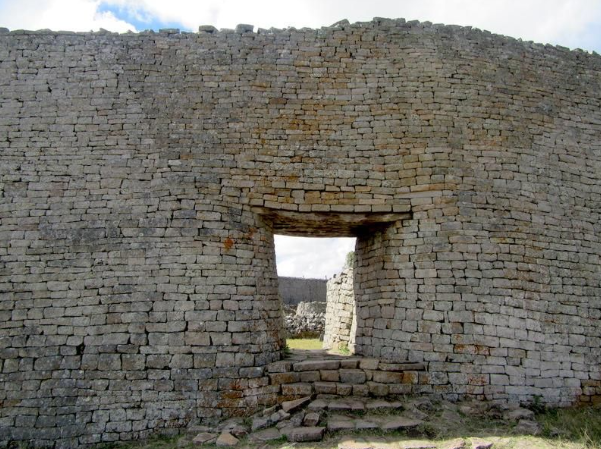
Name - Outer Wall, Parallel Passage
Other - Example of dry masonry, the prevalence of flowing curves in the architecture of Great Zimbabwe


Name - Conical Tower
Function - Stored crops
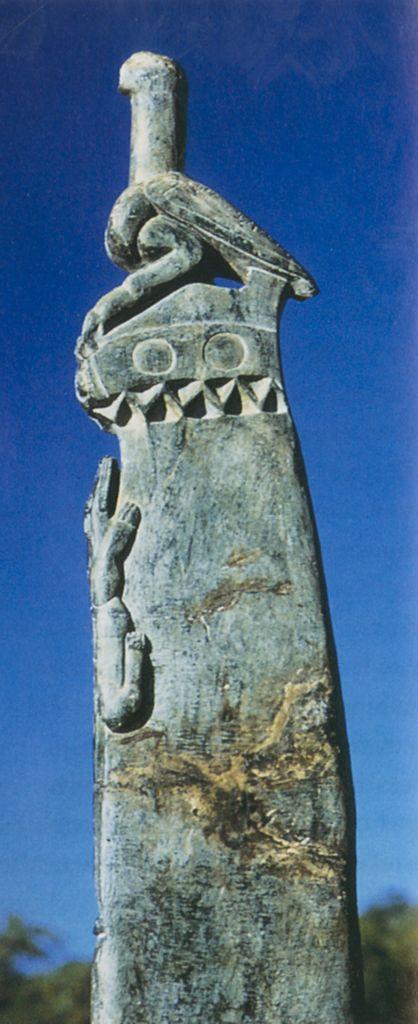
Name - Royal emblem in the form of a fish eagle
Date - 1250–1400
Culture - Ancestral Shona
OG Location - Great Zimbabwe, Zimbabwe
Function -
Patron -
Material - Soapstone
Other - depicts a fish eagle, represents an emblem associated with the king of Great Zimbabwe, There are likely two depictions of birds in this sculpture: an eagle and an owl, The crocodile depicted to the left is believed to have been associated to the dead, The animals depicted in this piece seem to allude to the king’s power to cross boundaries between land and water, which symbolize the realms of the living and the dead
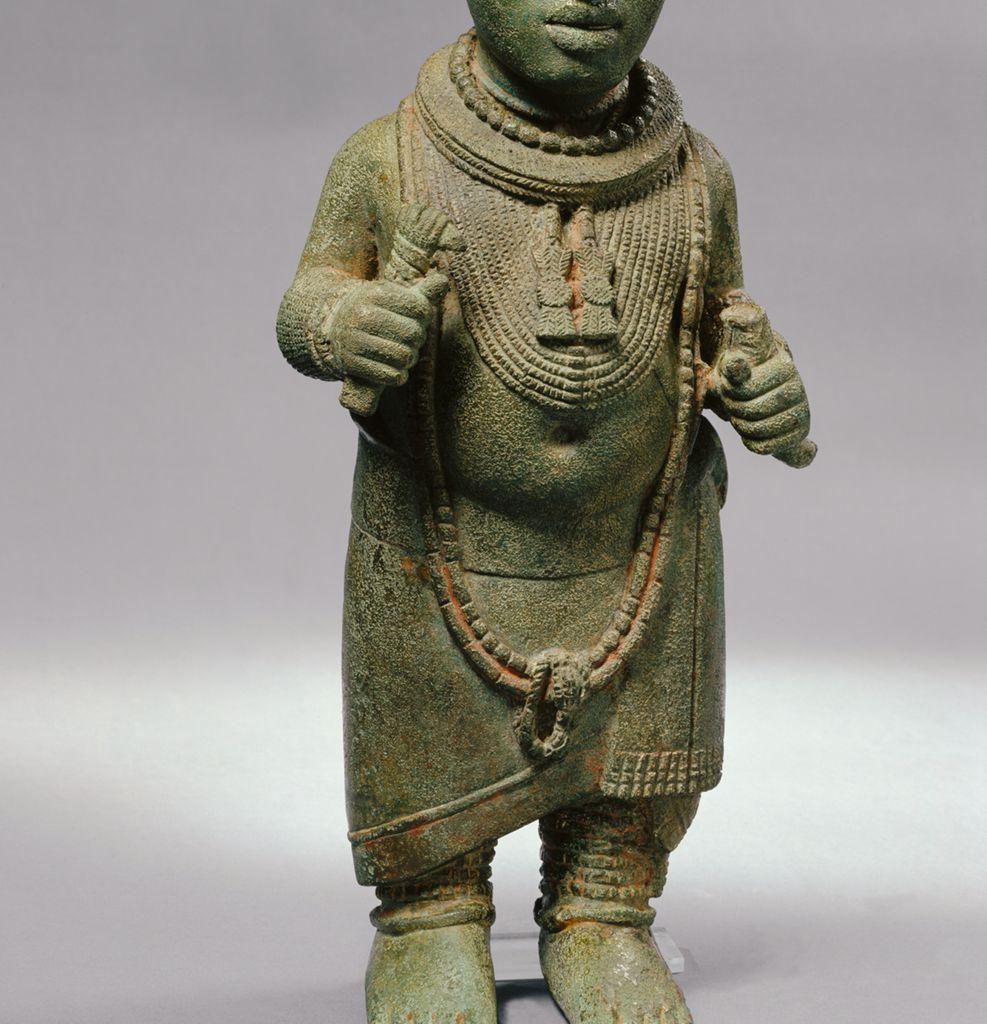
Name - Figure of an Oni, Ile-Ife
Date - 1250–1350
Culture - Ancestral Yoruba
OG Location - Ife, Nigeria
Function -
Patron -
Material - Copper alloy
Other - he body proportions of this piece privilege the head, which in Yoruba beliefs is tied to the power and strength of an individual, This figure holds an animal horn in its left hand, a symbol of royal power, The prominent stomach in this figure shows that the king is prosperous and well fed
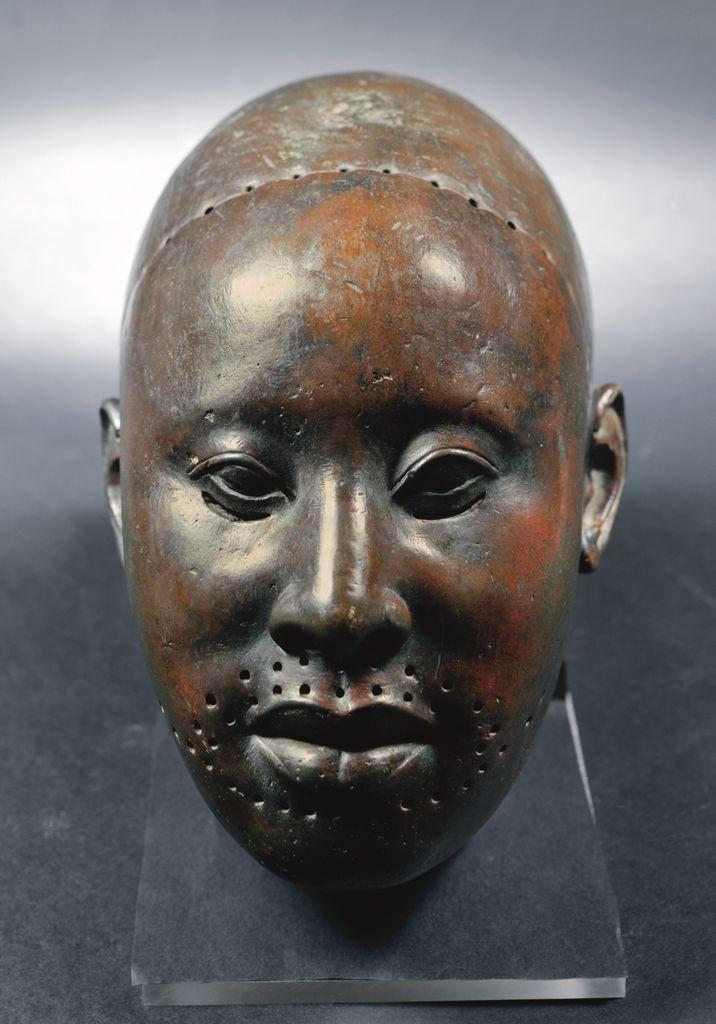
Name - Mask (Obalufon II)
Date - circa early 14th century CE
Culture - Nigerian
OG Location - Ife-Ife, retained in the palace through the 20th century
Function -
Patron -
Material - Copper
Other - a likely depiction of a deified Yoruba Oni, mask in religious ceremonies that reinforced the supernatural powers of the king and the royal family, ritual object in second burial ceremonies, Originally this piece may have had hair or bead ornaments inserted in the holes around the mouth and along the hairline, This piece is characterized by a sense of idealized naturalism, This piece was made using the lost-wax casting method

Name - Head with crown
Date - Early 14th century CE
Culture -
OG Location - Olókun grove site, Ile-Ife
Function -
Patron -
Material - Copper alloy
Other - an image possibly related to Olókun, a Yoruba deity, likely the goddess of water, healing, reproduction, and commerce, vertical facial striations are depictions of ichi scarification marks and makers of socio-political status
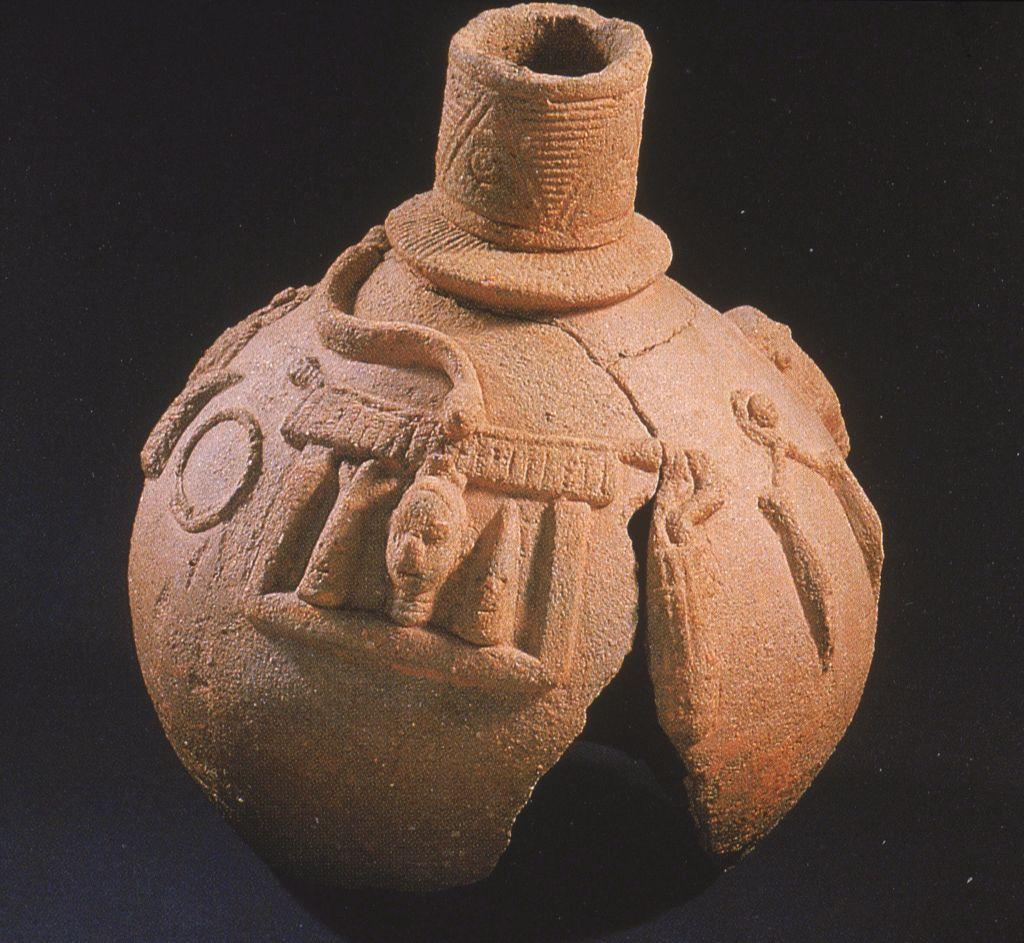
Name - Pot for libations
Date - 1250–1350
Culture - Ancestral Yoruba
OG Location - Ife-Ife, Nigeria
Function -
Patron -
Material - Fired clay
Other - Depicts a shrine with the head of the Oni, iron pendants, which were the insignia of male and female elders charged with dispensing justice, embedded in the pavement of a palace courtyard, contains imagery that alludes to Yoruba beliefs about an "outer head" (a person's appearance) and the "inner head" (a person's true character)

Name - Head, possibly an Oni
Date - 12th-14th centuries CE
Culture -
OG Location - Ife-Ife, Nigeria
Function -
Patron -
Material - Terracotta with traces of red pigment and mica
Other - he fine lines on this piece's face likely depict ichi scarification marks, which served as indicators of status